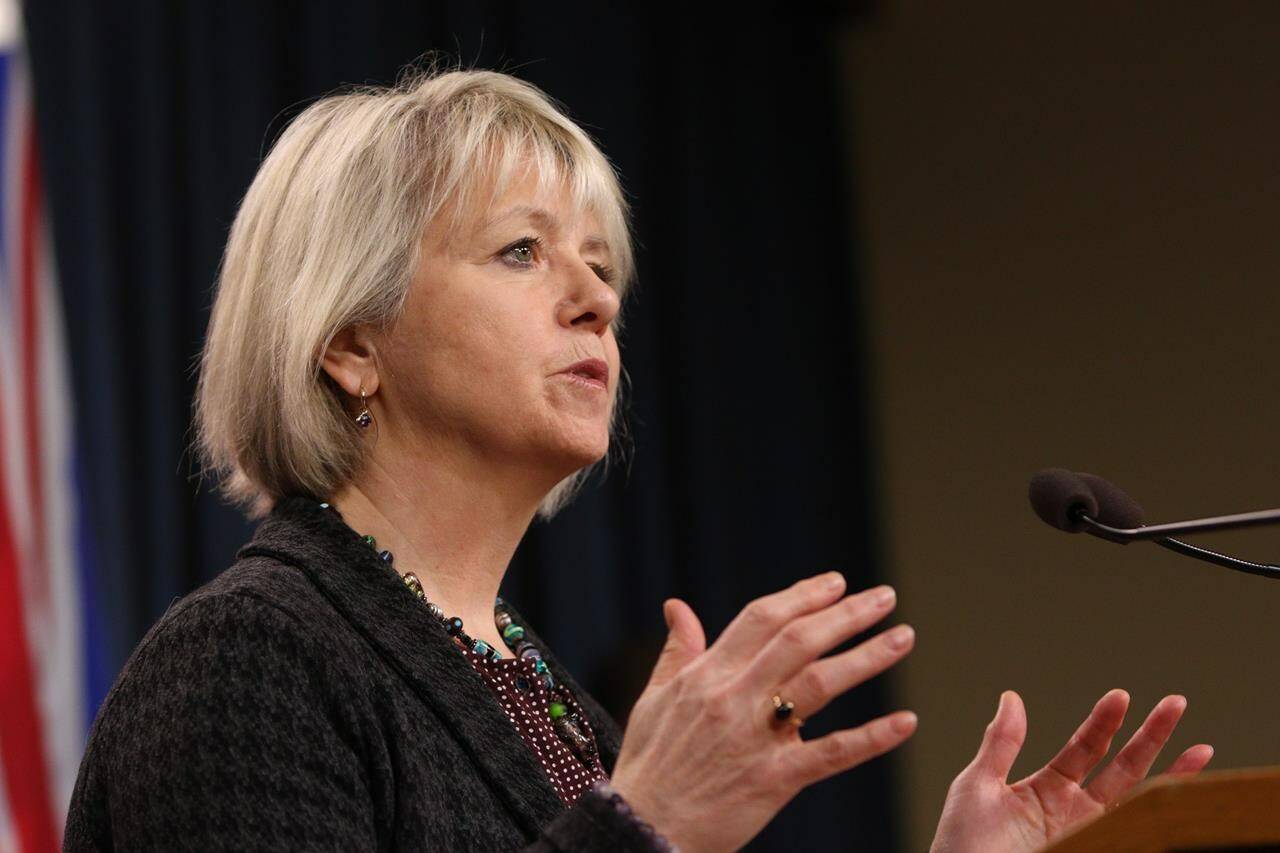B.C.’s top doctor says the province’s prescribed safe supply program is succeeding as one tool to save lives from the ongoing toxic drug crisis, and is recommending that the government expand what substances people are able to access through it.
Dr. Bonnie Henry released her 96-page review of the program on Thursday (Feb. 1), about four years after prescribed safer supply was first rolled out. Henry said that research is still ongoing to determine the evidence-based effectiveness of prescribed safe supply, but that the studies that do exist and the consultations she has done indicate it should be continued.
Beyond this, she also recommended that the province explore additional medical models to expand access and, crucially, non-medical options as well. This approach, which would allow people who use drugs to access a safer supply without a doctor’s prescription, was also recommended last November by a death review panel convened by the BC Coroners Service.
Both then and on Thursday, the recommendation was immediately shot down by Mental Health and Addictions Minister Jennifer Whiteside.
“We are not moving to a non-medical model (for safe supply),” Whiteside said. “We are going to continue to work with frontline providers, with our health care system to improve the current model.”
If the province is to stick to medical only models, Henry said it needs to start offering more options of safer supply substances.
“The medical models, in my recommendation, must be expanded. They must be more of a holistic integrated care model, where you can have…expanded access to different medications that meets people’s needs alongside treatment medications.”
Henry added that despite the province’s rejection her office is currently looking at what the provision of safe supply without a prescription might look like. “I think there are models out there that we need to look at,” she said. “I think we need to keep this conversation going.” She added that her office will be releasing a special report on this in the future.
“In the meantime, we have many things that we can do that expand the medical model.”
RELATED: Bonnie Henry to review B.C.’s safe supply program
Henry’s call for an expansion of alternatives also appears in other key recommendation in her report. Henry said that the province should work with manufacturers and distributors to expand opioid medication options available to people at risk of opioid overdose, with priority in supplying prescription heroin and fentanyl, including smokeable versions.
It is not clear yet how much such a program would cost or whether government would agree to it.
Henry’s report, commissioned in spring 2023, comes one week after the BC Coroners Service confirmed that 2,511 people died from toxic drugs in 2023 – roughly seven people dying per day.
The province first started making safer supply available in 2020 when the COVID-19 pandemic coincided with the toxic drug crisis. The program mainly involves prescribing hydromorphone, a morphine-based opioid for severe pain.
As of September 2023, 4,331 people had access to safer supply – a fraction of the 115,000 individuals diagnosed with opioid use disorder. Estimates from the BC Centre for Disease Control, however, peg the number of British Columbians who use unregulated drugs at 225,000.
“Given the unpredictability of unregulated drugs, each of these 225,000 individuals is at risk of death,” Lisa Lapointe, the former chief coroner, said last month.
The safer supply program, which is just one part of a broader response to deaths caused by unregulated drugs, has faced scrutiny by some politicians over the years. They have voiced concern in particular on the issue of diversion, with the possibility of prescribed safe supply falling in the wrong hands or being used to secure harder drugs of unknown quality.
“We need to recognize that diversion in this context is a recognition of unmet needs, a variety of needs,” Henry said.
Whiteside said her ministry will be reviewing the report, but has already implemented some of the recommendations, including changing the name from “prescribed safer supply” to “prescribed alternatives,” on Henry’s recommendation that safer supply means different things to different people.
Other immediately implemented recommendations include reducing the risk of misuse of prescriptions by working to expand medication options, making ‘witnessed’ dosing the default for new medications and updating clinical guidance on hydromorphone for select patients.
Whiteside said available evidence shows the prescribed safe supply is “having a positive impact” in pointing to a British Medical Journal study. She said it shows that the prescribed alternatives program reduces the risk of death by as much as 91 per cent in people with opioid-use disorder.
“Now we want to ensure that the program still meets the needs of people at risk of dying due to the increasingly poisonous and unpredictable illicit drug supply,” she said.
Elenore Sturko, BC United MLA for Surrey-South and BC United’s shadow minister for mental health, addiction, recovery and education, sees portions of the report as vindication.
“Months ago government officials called diversion an ‘Urban Myth,” she wrote on X, formerly known as Twitter. She then quoted part of the report that reads, “emerging evidence indicates diversion of prescribed substance(s) is occurring and may be causing harms.”
“As critic for Mental Health & Addiction, I will continue to advocate for stricter safeguards and recovery oriented practices in BC,” she wrote.

